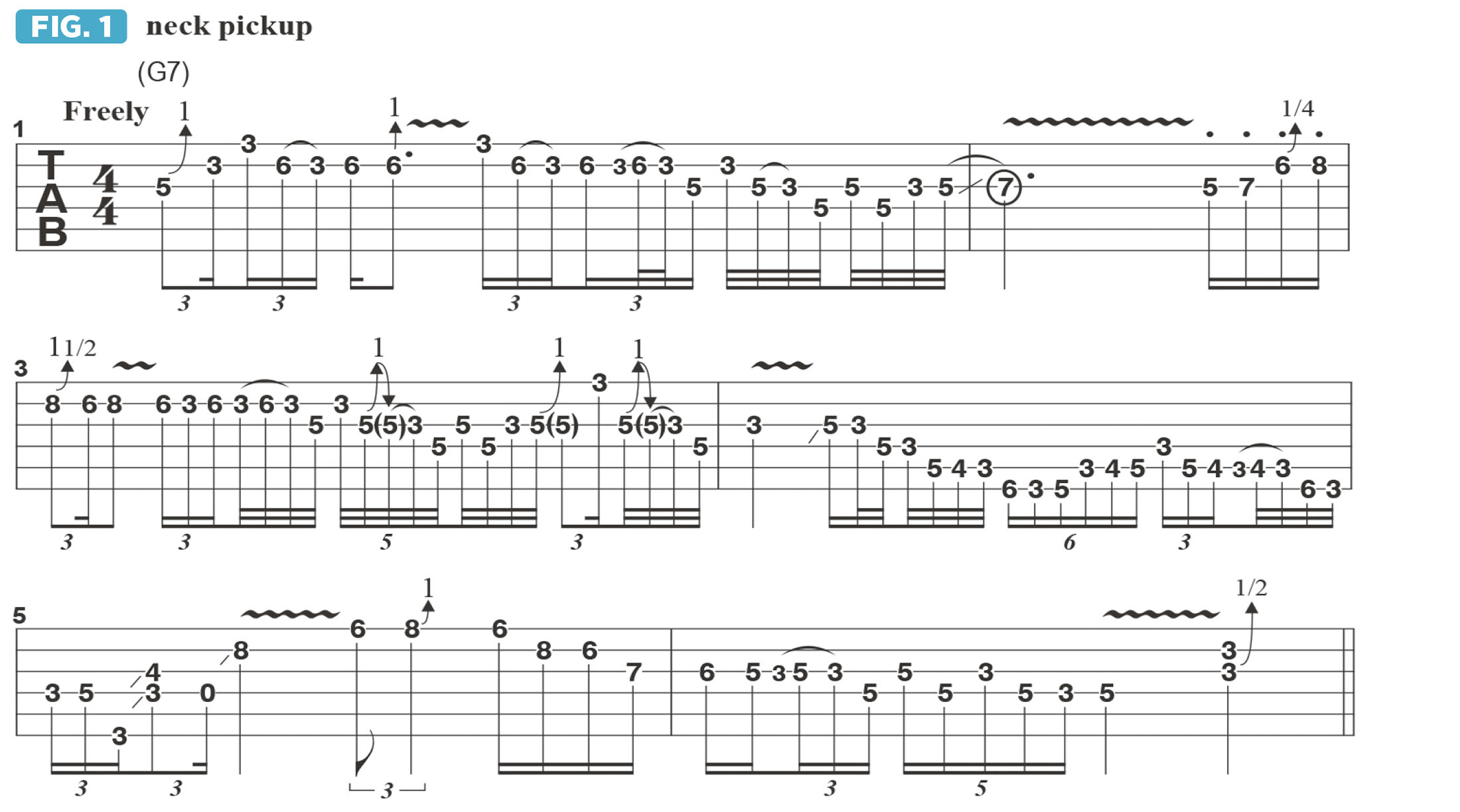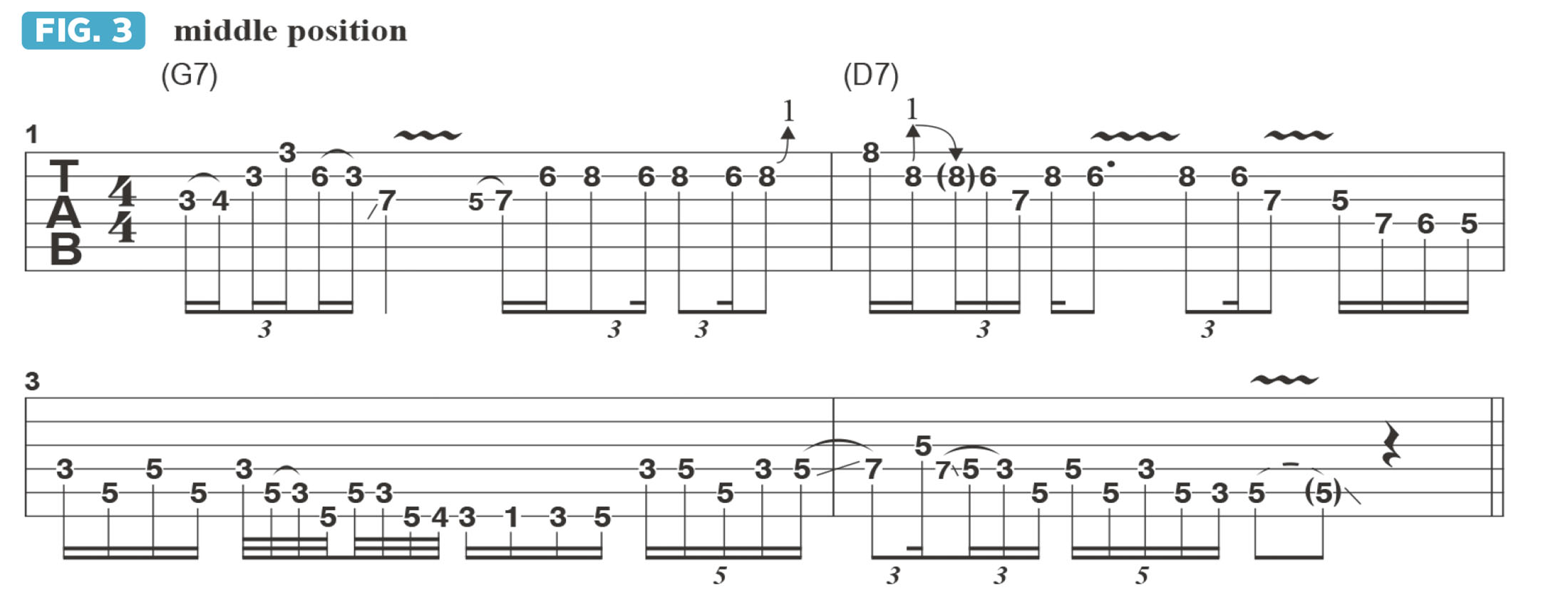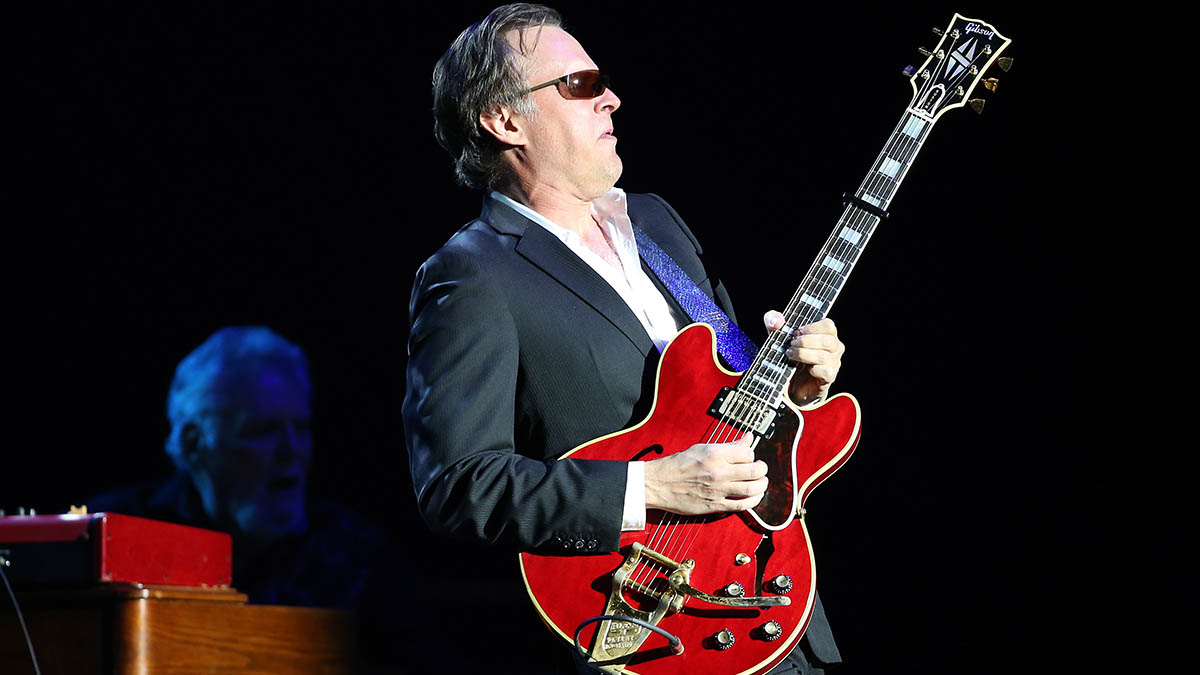“I like Firebird Vs the best, simply because this is the model that Johnny Winter played”: Learn Joe Bonamassa’s favorite Firebird licks in this exclusive video lesson
Armed with a 1964 Gibson Firebird V, Joe Bonamassa teaches us some tricks he picked up from the late, great Johnny Winter
Today’s featured axe is a 1964 Firebird V. For those unfamiliar, Gibson made four different versions of the Firebird in the mid-’60s.
A Firebird I, played famously by Eric Clapton for a spell during his days in Cream, has dot inlays and only one pickup; a Firebird III has dot inlays and two pickups; a Firebird V, like this one, has trapezoid inlays and two pickups; and a Firebird VII has block inlays, an ebony fretboard and three pickups, with all gold hardware.
Back then, the decision as to which guitar was best for you came down to what you wanted to spend; the Firebird I was the least expensive and the Firebird VII was the top of the line.
I like Firebird Vs the best, simply because this is the model that Johnny Winter played. My youth encapsulated in a guitar is a Firebird V, because Johnny was such a huge hero and inspiration to me, from when I first heard him when I was 11 years old.
My very first Firebird was a “medallion” Firebird, which was a reissue of a 1964 Firebird V, first made available in 1972. In those days, all I wanted to do was to play like Johnny!
He would use the neck pickup only, and was just ripping blues-rock riffs all day long! To me, that was the epitome of blues-rock guitar – a Firebird V into a cranked Fender amp. Johnny was always on fire back then, singing and playing brilliantly on some of the greatest blues-rock songs ever.

Because of the construction of the guitars – a mahogany neck-thru-body design with mahogany “wings” on the sides, plus the mini humbuckers – Firebirds have a very distinct sound and are a bit brighter than other Gibson solidbody guitars.
Figure 1 is a six-bar phrase based on the G minor pentatonic scale (G, Bb, C, D, F) and the G blues scale (G, Bb, C, Db, D, F). These phrases are intended as nods to Johnny’s phrasing style – with an emphasis on fast 16th-note triplet pull-offs and fast, aggressive vibratos.

Firebird Vs produce a throaty sound that is absolutely unique and immediately recognizable.
Figure 2 offers another “Johnny approved” phrase, as G minor pentatonic is played up high in 15th position; you gotta get the vibrato right!

As I mentioned, Johnny never touched his toggle switch and always stayed on the neck pickup, but every toggle switch position on this instrument can yield fantastic results.
Figure 3 offers a phrase played with both pickups engaged. Bar 1 features a G minor pentatonic lick, after which I switch to phrases based on D minor pentatonic (D, F, G, A, C).

In Figure 4, I’ve switched to the bridge pickup only, which is full treble and as bright as it gets. These lines are based on the G blues scale.
Utilizing the bridge pickup, the sound is very aggressive and just might rip your ears and your eyelids off! Rolling back the tone control a bit tempers the bite.
Get The Pick Newsletter
All the latest guitar news, interviews, lessons, reviews, deals and more, direct to your inbox!
Joe Bonamassa is one of the world’s most popular and successful blues-rock guitarists – not to mention a top producer and de facto ambassador of the blues (and of the guitar in general).
“There are so many sounds to be discovered when you get away from using a pick”: Jared James Nichols shows you how to add “snap, crackle and pop” to your playing with banjo rolls and string snaps
Don't let chord inversions bamboozle you. It's simply the case of shuffling the notes around








![Joe Bonamassa [left] wears a deep blue suit and polka-dotted shirt and plays his green refin Strat; the late Irish blues legend Rory Gallagher [right] screams and inflicts some punishment on his heavily worn number one Stratocaster.](https://cdn.mos.cms.futurecdn.net/cw28h7UBcTVfTLs7p7eiLe.jpg)


